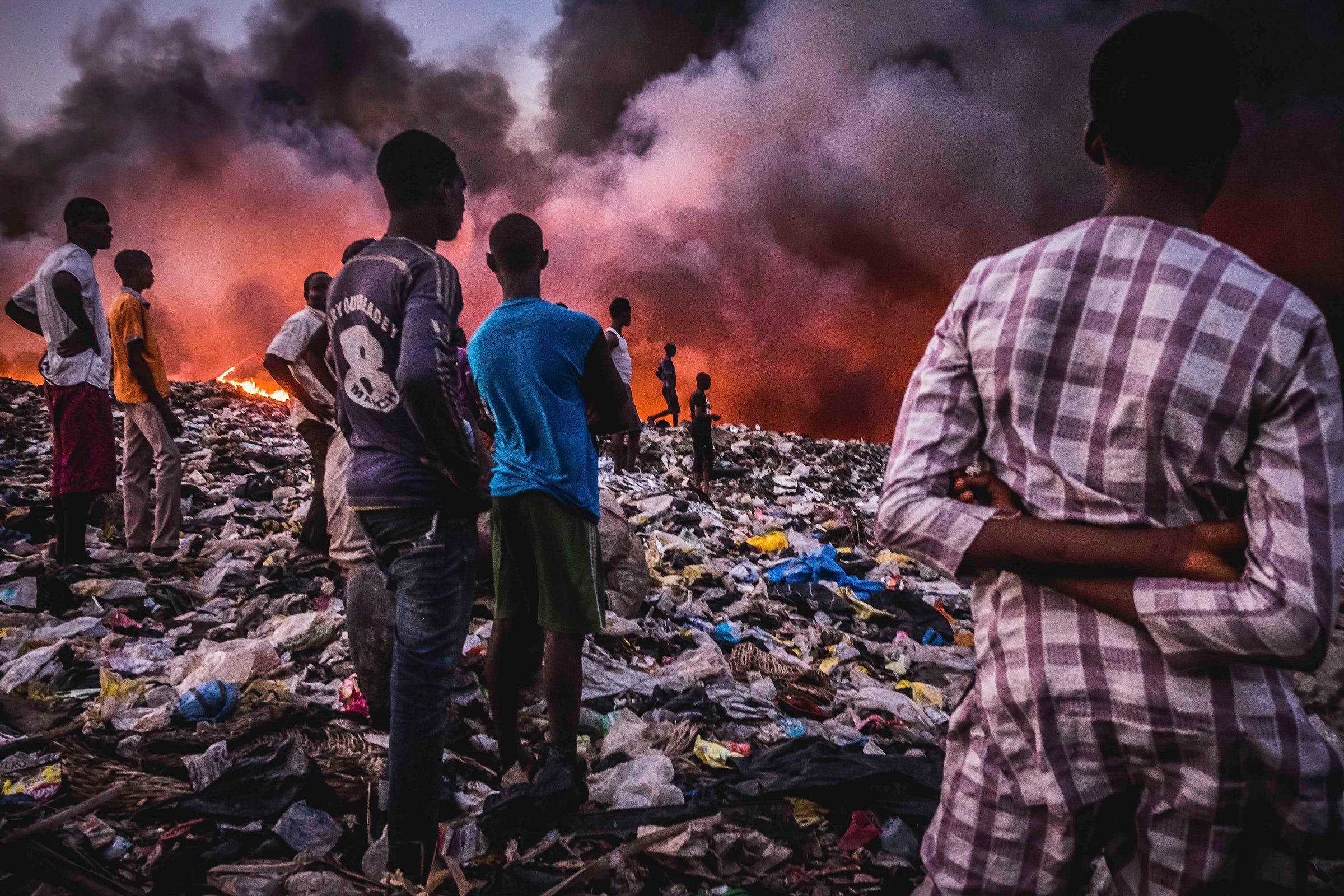There are three bodies pictured. The first is most obvious, and despite its full hair and glittering blouse, the angle of its face shows a gaze so fixed and inanimate it seems similar to the stare of a skeleton. The second body is a little distant and is seen through a glass. Because of this optical trick, it appears to stride into a bloom of plastic flowers. But the third body is further removed—you notice only its silhouette, a steady shadow that lands on the first body. With this you can tell the moment the photograph was taken, a fact by which to close the gap between glimpse and record.
Bernard Kalu: “Photography is like a pause button to an ever-pacing world.”
The photograph was taken in Lagos, Nigeria.
On one of my regular walks, I stumbled on a mannequin in front of a clothing shop less than 2000 steps from my home; it's skin was white, and almost like a lightbulb moment, it struck me that I hadn't seen a black mannequin before, even though I lived in Africa, in Lagos to be precise. That was how my project Oyinbo was born. The photo was shot as a part of the project.
The image is special to me because of what it represents; more so, the juxtaposition of the mannequin with the woman walking behind in the frame alludes to the story of the project.
One of my common sayings is, “The street is always posing, waiting for who would capture it.” This in many ways affects how I like to photograph. I like to capture in my work the un-posed fragments of the daily lives of the everyday people. There is so much to learn through that kind of observation.
Photography is like a pause button to an ever-pacing world. So much is lost in that transit, but through photography, people are blessed to revisit moments lost and relive it. The gift of photography is double-edged: it impacts the creator as it impacts the consumer.
Two other photographs by Bernard Kalu
About Bernard Kalu
Bernard Kalu (b. 1989) is a visual artist based in Lagos, Nigeria. His work aims to explore life and humanity. Bernard began working in photography in 2014, exploring street documentary and creative twists to wedding photography. He is a certified Canon Miraisha master storyteller, and an official Fujifilm Global X-Photographer. He is also a VII Academy Foundry alumni, first runner up in the 2017 NATGEO Portfolio Review, a nominee for World Press Photo 6X6 Global talent 2020 and has been on assignment with a number of organizations within and outside Nigeria. Also, he is a member of Diversify Photo, and African Photojournalism Database (APJD). He convenes the SPWWBK (Street Photography Workshop with Bernard Kalu) through which he engages and mentors upcoming visual storytellers. Since 2017, when he showed his work at the Revolving Art Gallery, Lagos Nigeria, he has since exhibited both locally and internationally. More recently, he has begun focusing on raising awareness about environmental and social issues in his home country, Nigeria. Find his work on his website, and Instagram.
Last Week — Victor Akhere
Seeing him lie on the chair, the light falling softly on his skin, many thoughts went through my mind: memories of growing up, thoughts about my future, our future, many thoughts, and I took the picture.
It feels like a self-portrait.
I love how it perfectly embodies the emotions that I felt while photographing him, how although it's a photograph of my brother, it reminds me too much of myself.
Read more: “Calm Amidst the Hurricane.”
Support Tender Photo
This is the 36th edition of this publication. The newsletter can also read on web (best for viewing images), and via the Substack iOS/Android apps. Every week I feature one photograph and the photographer who took it: you’d read a short caption from me, and a statement from the photographer. My goal is to set up conversations with the work of early to mid-career African photographers. If this newsletter was shared with you, consider subscribing, and if you have already subscribed, please forward to a friend who loves photography.









Fantastic images
I am looking at these images shortly after hearing about a death. This, news of death affects what I see. And that is not needless to say, because nothing is needless. A common successful technique in photography is the use of shadows and reflection. There is a common saying among the Yoruba people about the snake that passes of a rock face, leaving nothing of its presence behind, because stone unlike sand does not hold the marks of a crossing.
This is to say shadows are vital and so are reflections and crawl marks and like in the second picture, simply standing and witnessing is also vital. "The street is always posing" - everything is important.